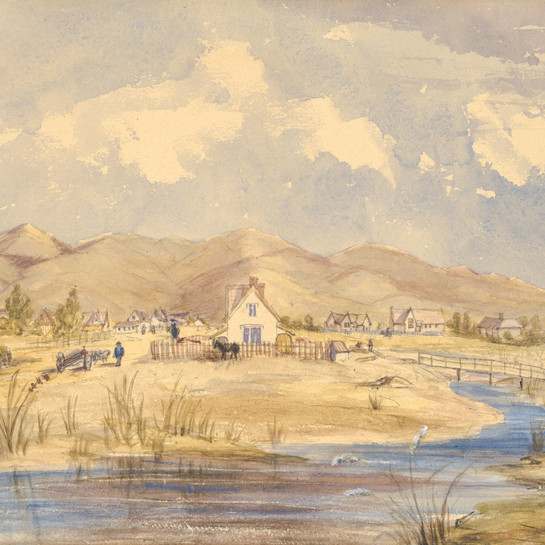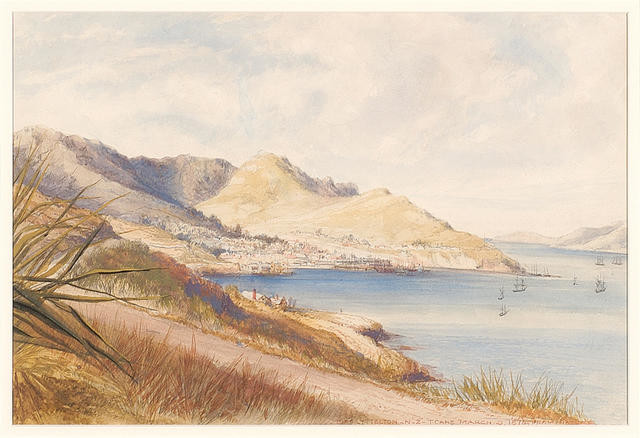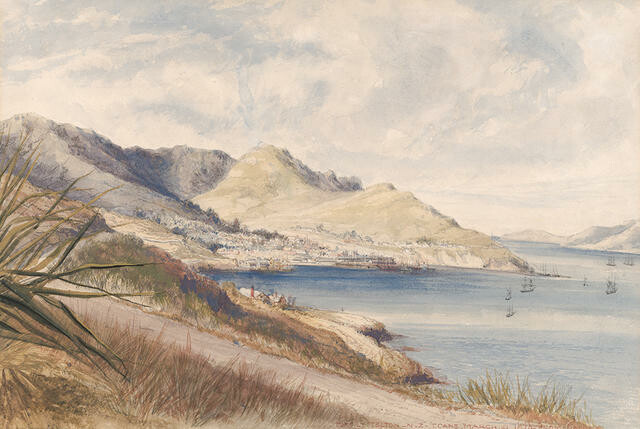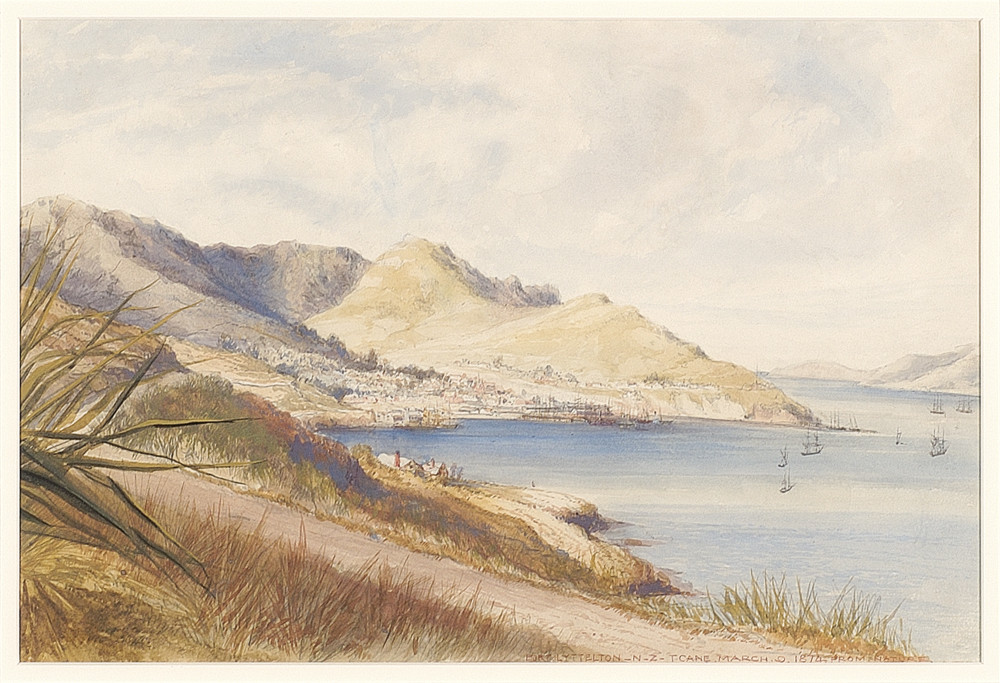Thomas Cane
Aotearoa New Zealand, b.1830, d.1905
Port Lyttelton, N.Z., March 9, 1874 from Nature
- 1874
- Watercolour
- Purchased, 2003
- 630 x 775 x 35mm
- 2003/35
- View on google maps
Tags: buildings (structures), harbors, hills, landscapes (representations), natural landscapes, roads, seas, ships, urban landscapes
The architect Thomas Cane designed several key buildings on Horomaka / Banks Peninsula, including the Timeball Station in 1876 which was built overlooking Whakaraupō / Lyttelton Harbour on the distant ridge just a couple of years after this watercolour was painted.
(Pickaxes and shovels, 17 February – 5 August 2018)
Exhibition History
For the exhibition Picturing the Peninsula (21 April - 22 July 2007), this work was displayed with this label:
Thomas Cane’s watercolour highlights the development and growth of the port of Lyttelton by the 1870s. The scene depicts a bustling harbour with the breakwater yet to be completed. numerous ships are shown loading and un-loading cargo at the docks with several more anchored off shore. In the distance the breakwater wharf is seen off Officer’s Point while much of the coastline making up Dampier’s Bay in the foreground was to be reclaimed during the 1880s.
Cane travelled and painted on Banks Peninsula regularly. Trained as an architect he also designed several key buildings on the Peninsula including the Timeball Station, Lyttelton and the Grand Hotel, Akaroa.
Thomas Cane completed this watercolour ten weeks after he first arrived in Canterbury. It shows the construction of Lyttelton’s breakwater from Officers Point, shown in the distance. Painted outdoors, the accuracy and detail of the scene highlight Cane's technical ability with watercolour.
He worked as an architect and designed several key buildings on Banks Peninsula, including the now historic Timeball Station in Lyttelton. The majority of his landscapes show Banks Peninsula scenes.
Cane was born in Brighton, England, and trained as an architect under Gilbert Scott. He arrived in Christchurch in 1874 and was Canterbury Provincial Architect from 1875 until the abolition of the provinces in 1876. He then went into private practice. Cane exhibited at the first Canterbury Society of Arts annual exhibition in 1881 and continued to exhibit with the Society through to 1900.
(Label date unknown)




